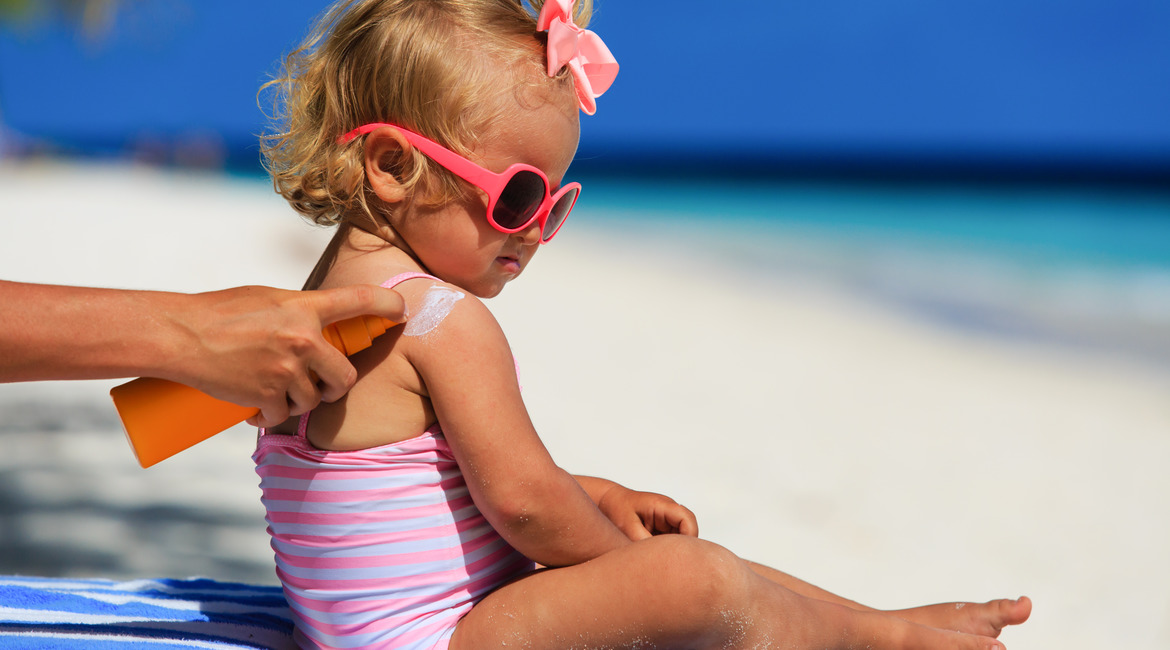Children have very sensitive skin that is easily damaged by exposure to direct sunlight exposure, radiation, and Ultraviolet (UV) rays.
Sun safety is usually a huge hassle for parents, as getting their kids to apply sunscreen is almost always an ordeal.
Research shows that too much sun exposure results in sunburns, premature ageing, skin cancers, heat stroke or heat exhaustion, cataracts and several other eye diseases.
Also, children’s immune system is affected by the radiation from the sun, resulting in greater infections and limiting vaccines’ effectiveness.
As good as relaxing in the sun feels in the summertime, safety measures are required.
Sun Safety Tips for Your Little Ones
Most sun damage to the skin occurs early in life, so it is critical to avoid sunburn in children using sun safety tips.
Protecting toddlers and teenagers from sunburns and excess sun exposure significantly decreases their risk of developing skin cancer.
Hence, the best sun safety tip for children is to apply the tips listed below in combination with one another to offer optimum protection.
1. Seek Shade
Plan indoor activities so that the kids are indoors during the period when the sun is hottest.
Although the timeframe slightly varies, the sun is generally the hottest, around 10 a.m. and 4 p.m.
However, if staying indoors during the hottest hours is not possible, seek shade under an umbrella, a tree, or a tent.
2. Cover Up
Another great way to protect your kids from the sun is to use protective Ultraviolet (UV) clothing.
When shopping, purchase clothes that are either certified for their ultraviolet protection factor.
Also, to offer protection to children when outdoors during the summertime, they should wear long-sleeved shirts or trousers.
However, keep in mind that darker coloured clothes absorb more of the sun’s harmful rays than lighter coloured clothes.
3. Wear a Hat
Long-sleeved shirts and trousers are perfect for protecting the body. However, hats offer shade to your kid’s face, scalp, ears, and neck.
If your child prefers a baseball cap, ensure that you apply sunscreen to any exposed body parts as it does not offer ear and neck protection.
For younger children and toddlers who are the hardest to apply sun protection creams on, hats with a wide brim or neck flap are a better option.
4. Wear Sunglasses
Protect your child’s eyes from sun damage by using sunglasses that prevent up to 100% protection against sun rays.
Long exposure to the UV rays from the sun increases their chances of developing cataracts in adulthood.
5. Apply Sunscreen
Sunscreens are a vital sun safety tool to use for your kids and an added layer of defense. It prevents sun damage and burns and offers protection against the sun’s rays.
Even if sunscreens are used on children, limit their exposure to direct sunlight. Please do not allow them to stay in the hot sun longer than necessary.
For most kids, the chemicals in some sunscreens trigger a skin rash or burn. Hence, perform a patch test on a small skin surface before applying more widely.
You can also use a mineral-based sunscreen containing zinc or titanium to reduce your child’s risk of a skin reaction or allergy.
Purchase sunscreens with an SPF of at least 30 and creams with words on their packaging such as water-resistant and broad-spectrum.
Also, since children are usually uncooperative and very active, consider purchasing a “stick” sunscreen to make application easier.

Ways to Teach Your Little Ones About Sun Safety
Teaching children ways to protect themselves from the sun’s damage at a young age helps them maintain healthy skin throughout their adult years.
Try these five ways to make sun safety memorable for your little ones and help them understand the need for sun protection.
1. Show Children How to Apply Sun Protection Properly
Sunscreen is not very effective if not properly applied. Create a catchy song as you apply sunscreen on them.
Always mention the body parts that are easily forgotten and areas such as the back of the neck and ears that require an extra hand to reach.
Let your kid assist in putting on sunscreen while singing the catchy song all the while.
Emphasise the importance of reapplying sunscreen every two hours or after any activity such as swimming.
2. Advice on Tanning
Children, especially teenagers, are intrigued by sun-kissed skin, commonly referred to as a tan.
Use this as the perfect chance to teach them that skin burning or tanning is hazardous to children because it increases their chances of having melanoma by 60 per cent.
If your kids insist on a tan, suggest a self-tanning lotion, so they stay within the guidelines of sun safety.
3. Dress-Up Time
Let children shop for fun hats, sunglasses, and dresses that offer sun protection.
Shopping is one of the perfect opportunities to teach your little ones about UV protection and the damages of sun exposure to their skin and eyes.
Also, having their selected items for outdoors activities makes getting dressed feel like a special event.
4. Craft Accessories
Crafting beautiful homemade sunray-sensitive jewellery is a great way to teach young sunbathers about sun safety.
All required is a leather strand, scissors, and UV detection beads that change colour when exposed to the sunlight.
Thread the beads on the leather strand and tie them around your kid’s wrist or ankle as an instant safety warning system.
5. Lead by Example
You can talk about the protective measures against sun damage all day long, but as a parent, if you do not model sun safety, your kids might not follow suit.
Let your kids see you using protective clothes, applying sunscreen, and avoiding direct sunlight exposure during the hottest time of the day.
Remember always to cover up when outdoors and to reapply sun protection creams as necessary.
After some time, your sun safety practices are sure to rub off on your children.
Conclusion
Protecting your kid’s skin is one of the essential things to do as a parent, as the risk of skin cancer begins to accumulate from a young age.
When using sun safety measures, be extra careful with fair-skinned, blonde, and red-haired children.
They are more likely to burn easily from longer sun exposure and are also at the most risk of having skin cancer later in life.
Most of the sun’s damaging Ultraviolet rays can penetrate the light cloud covers. Hence, do not forget to protect your kids even when it is cloudy and not hot weather.



